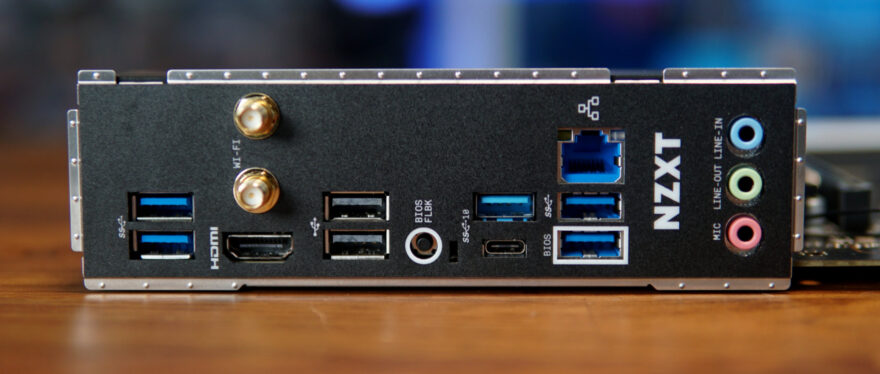NZXT N5 Z690 Motherboard Review
Brandon Dodman / 2 years ago
A Closer Look
Now let’s take a look at the board in closer detail. Unlike previous boards from NZXT, this board features almost no cover plates for the board, leaving most of the board exposed. This gives me the impression that it’s meant to be a more budget friendly board and would be a good choice for professionals who don’t need the fanciest board on the market and are instead focused on function.
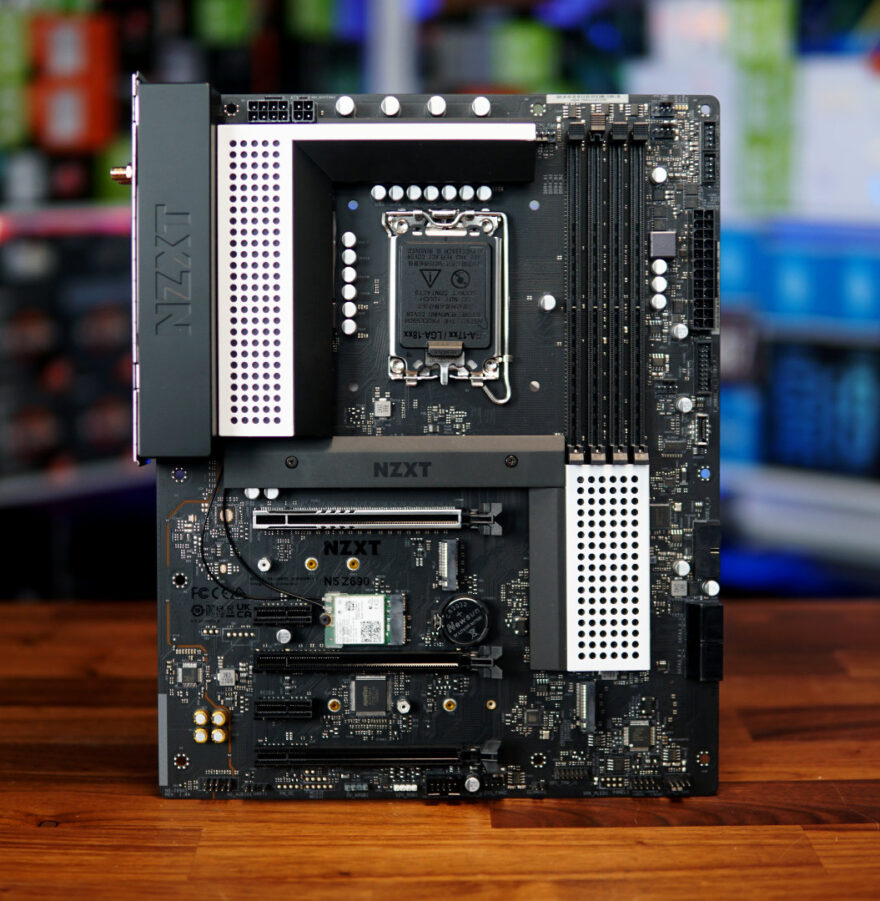
The back of the board is very bare. No backplate, just a bare PCB with a view of the traces.. There is one interesting feature back here though that we will have a closer look at that soon.
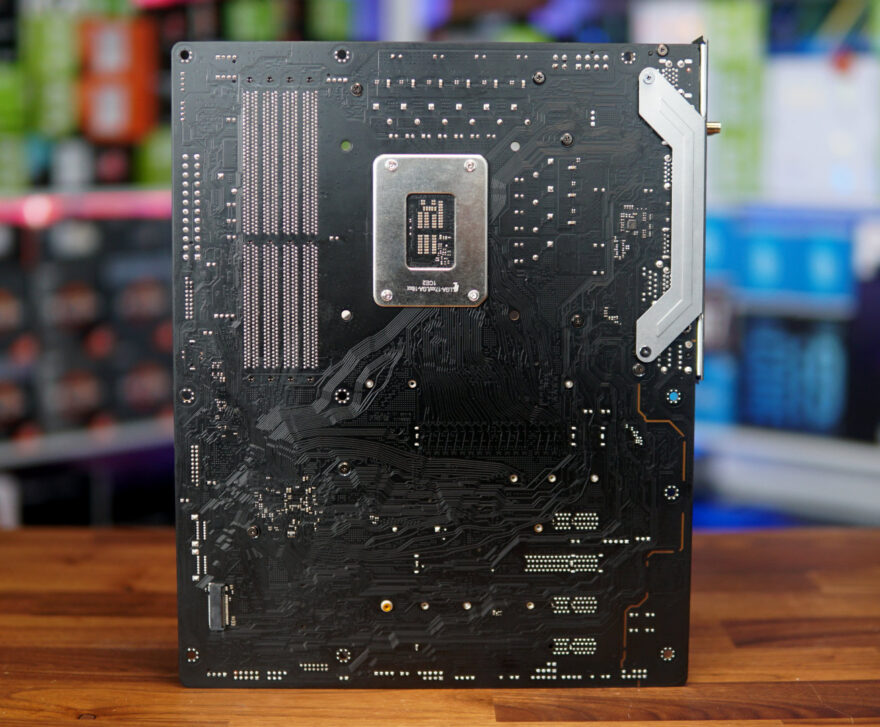
Being Z690, we have the newest Intel LGA 1700 socket with support for the latest Intel 12th generation Alder Lake processors. There’s also ample room around the CPU socket for larger air coolers with no obstruction.
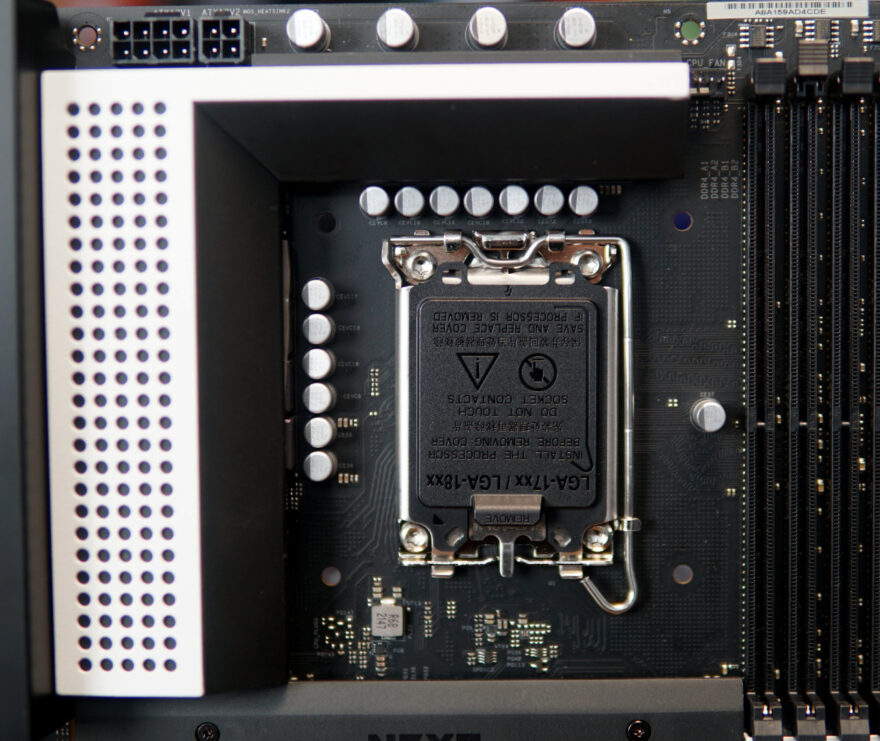
Right next to the CPU socket is where the memory slots are which support dual channel DDR4 memory, likely to keep this board as affordable as possible. They also feature a single clip design which is becoming more common as of late.
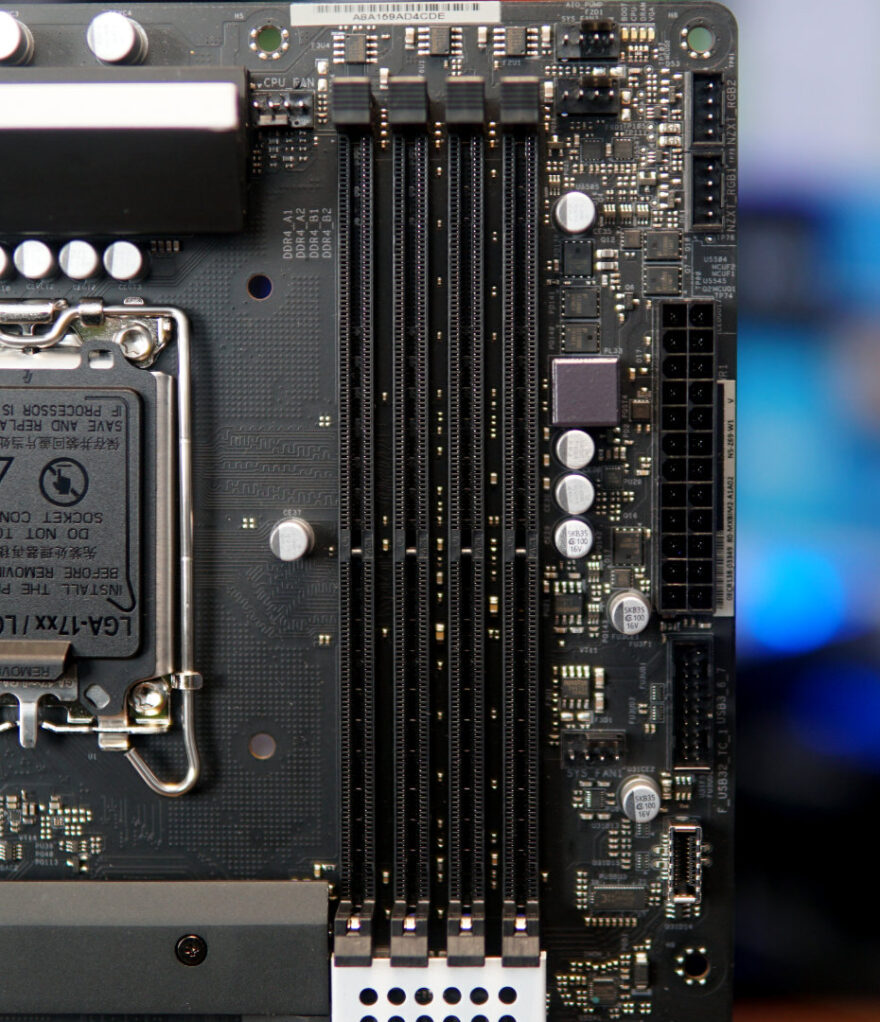
Above the CPU socket is the location of the EPS power connectors of which this board uses an 8+4 pin design for power delivery.
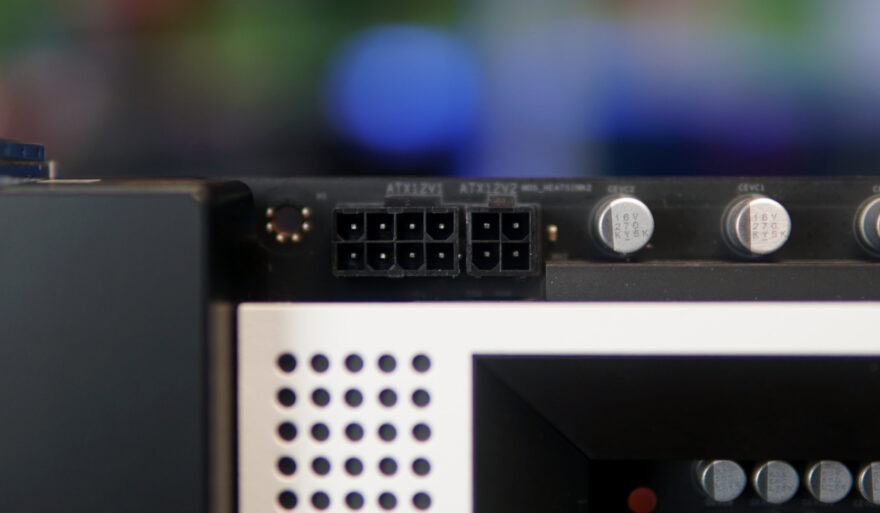
Moving across the top of the board to above the memory slots, we can find the CPU fan header and an AIO pump header, along with a regular system fan header. Something else we can see up here is a pair of NZXT RGB headers for connecting your NZXT RGB products directly to the motherboard to control within their CAM software.
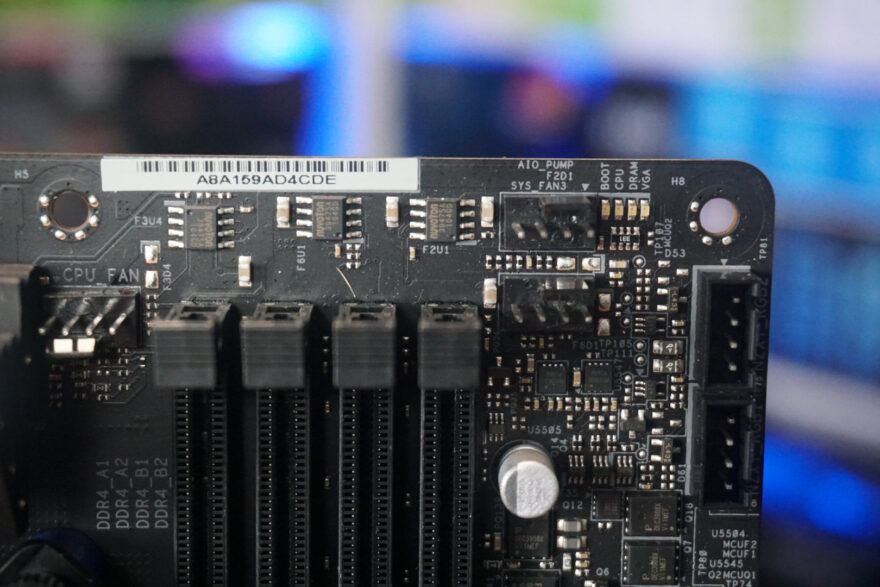
Moving down from there, we see the ATX power connector in its standard location.
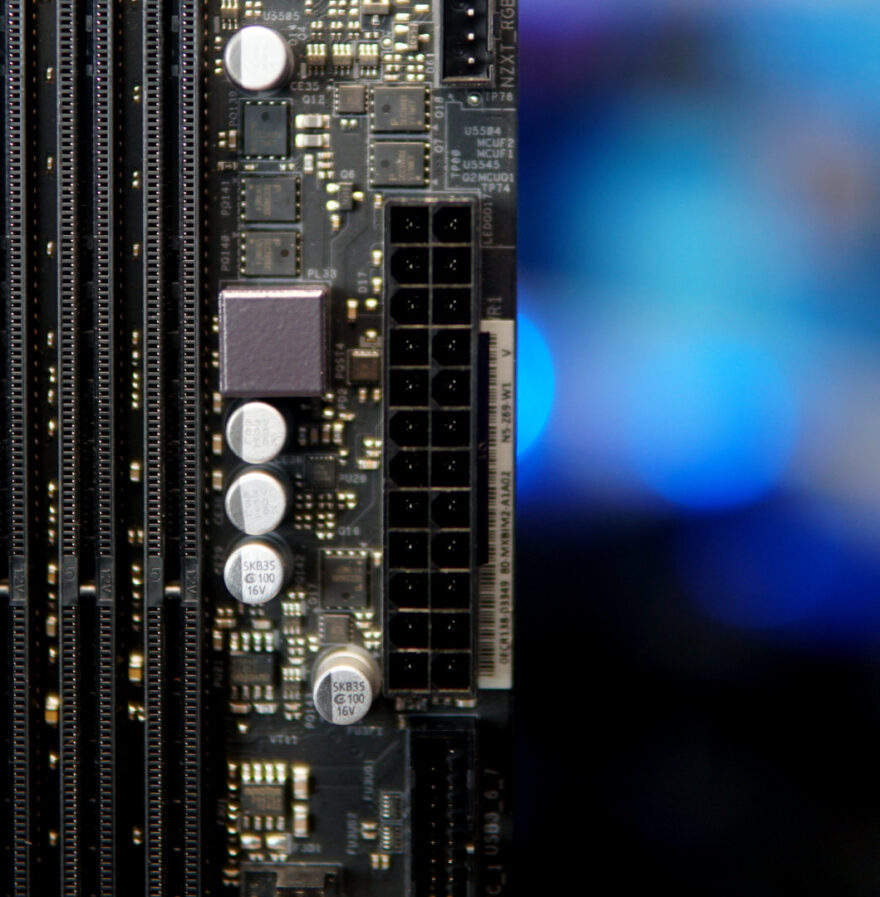
Going down some more is where we find our first USB headers on the board. Here we have a single USB 3 internal header and a USB type-C internal header.
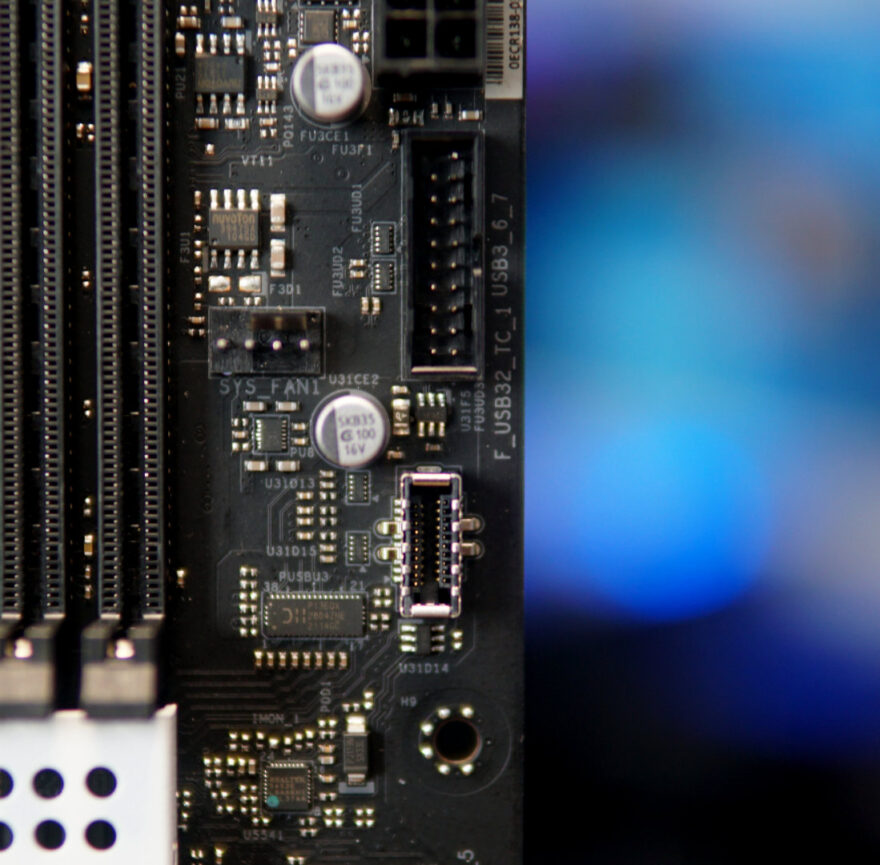
Moving down the board once again, we see yet another USB 3.0 header, though this time at a 90-degree angle. There’s also four SATA ports, which feels like enough as SATA is getting used far less these days for pretty much everything other than server or legacy applications. Having just four headers on the beard means that NZXT have included all of the cables you will ever need to connect your SATA powered storage.
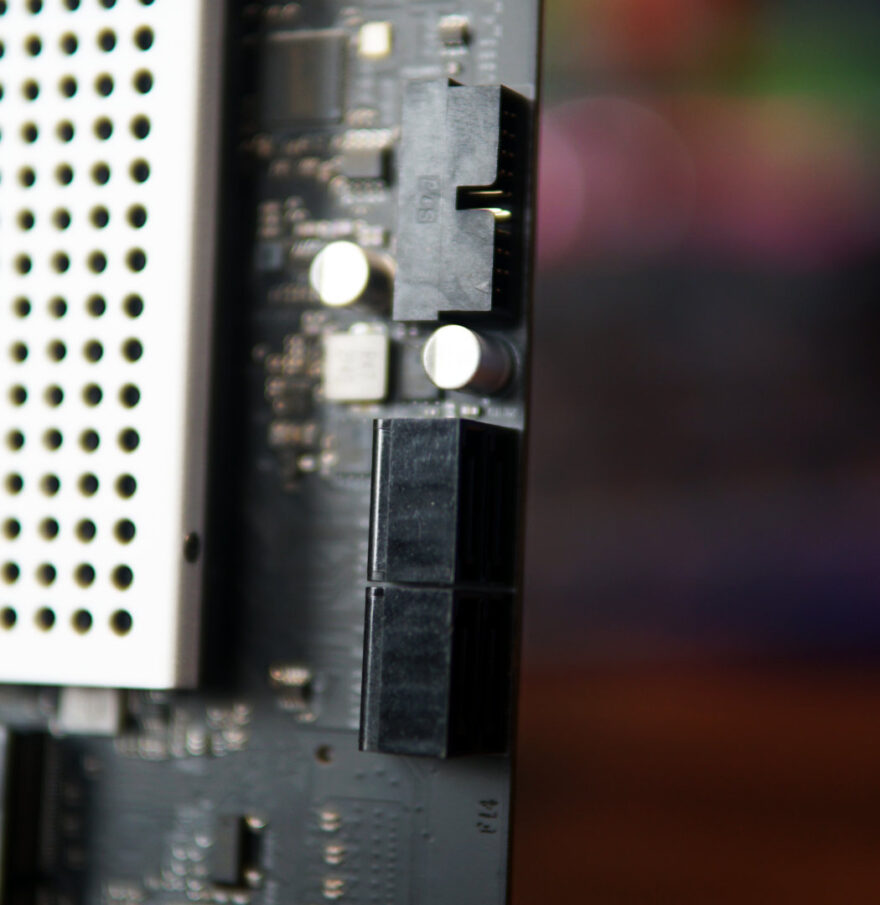
Once we reach the bottom of the board we can see another two fan headers, the front panel headers and the pins used to clear CMOS.
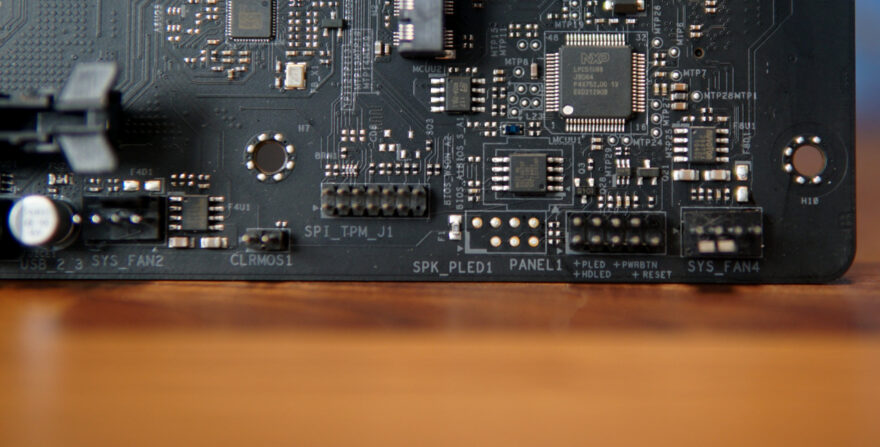
Further along the bottom of the board is a single USB 2.0 internal header. This could limit your options for components in the system but you could still get a splitter to expand the number of ports you have and most cases coming to market don’t include this speed USB now anyway.

The board has three PCIe physical 16x slots, . We can also see three M.2 Slots here, with two of them just out in the open whilst the top one is underneath a heatsink.
Something else we can see here is the pre-instaled Wi-Fi card. This just sits in full view and takes away from the aesthetics of the board somewhat, and would have looked much nicer with a black PCB. The wires for the card are router toward the rear I/O of the board where they terminate into the connectors for the antennas that are included in the box.
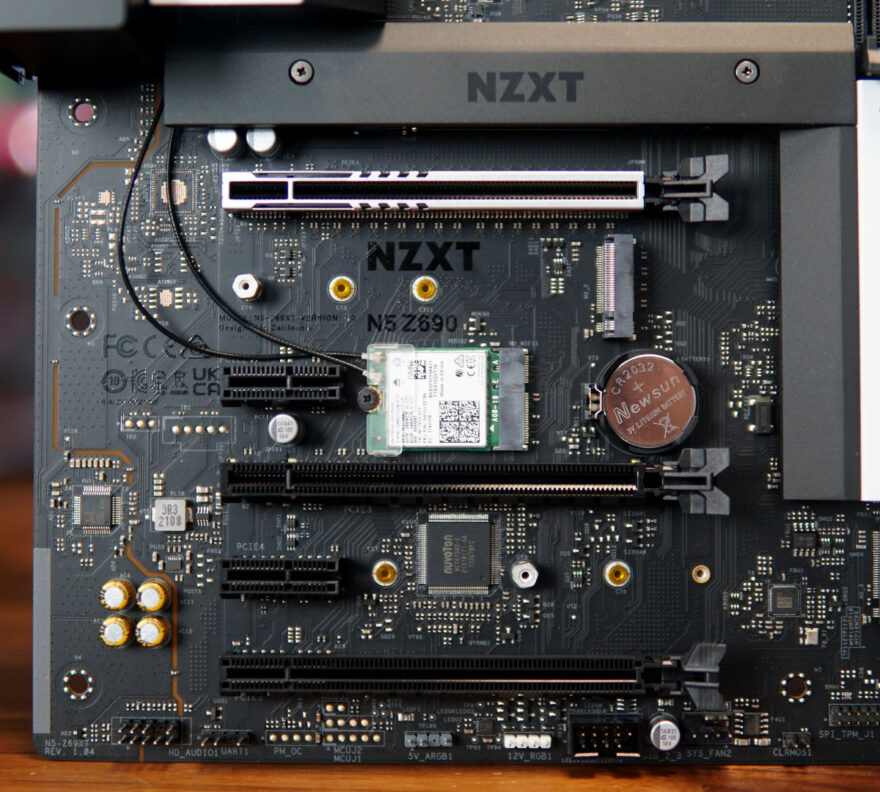
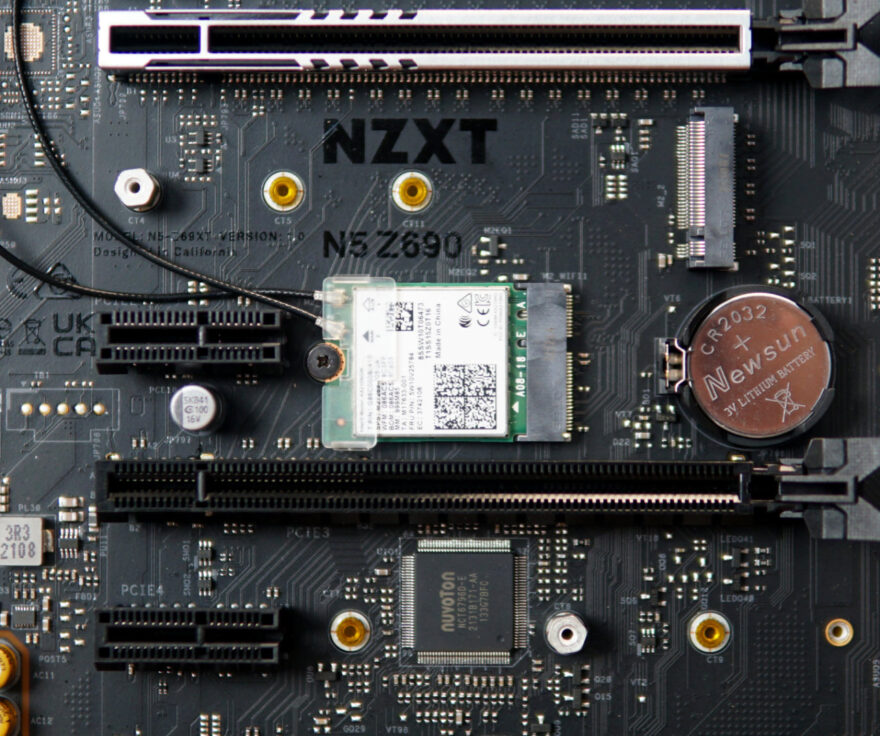
You might remember that we were given four M.2 screws but only had three slots on the front of the board, so why is there an extra screw? Well, that’s because this board features the inclusion of a fourth M.2 slot on the back of the motherboard. This is normally something you only see on ITX boards but for some reason, NZXT has chosen to put one here on this full-sized ATX board.
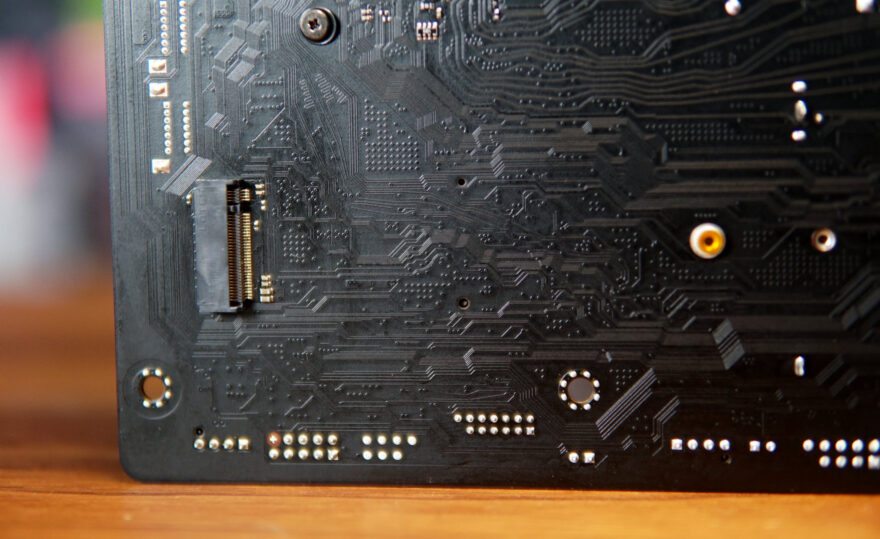
With the board stripped down of all of its removable parts, not much has really changed, yes the board looks even more baron now but compared to the other boards in NZXTs lineup once the armour is removed, it doesn’t look much different.
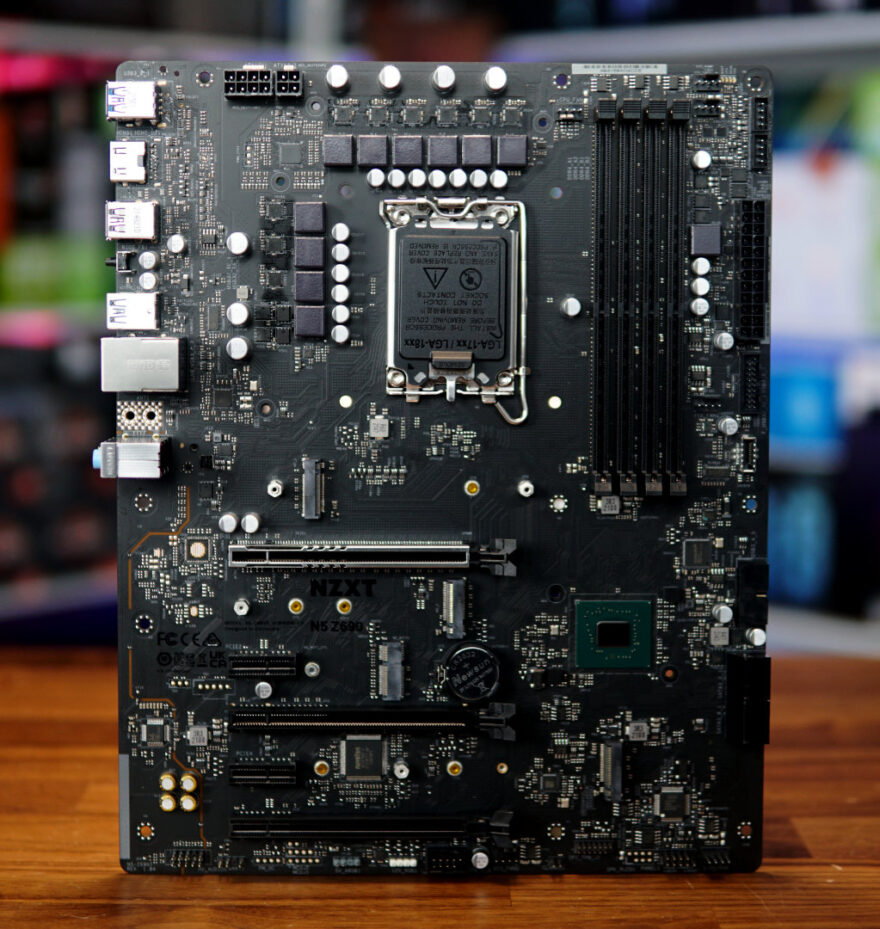
The chipset cooler is fairly substantial. It’s a passively cooled design that has an aesthetic metal plate on it that matches the design of the VRM cooler on the board, which we’ll look at soon.
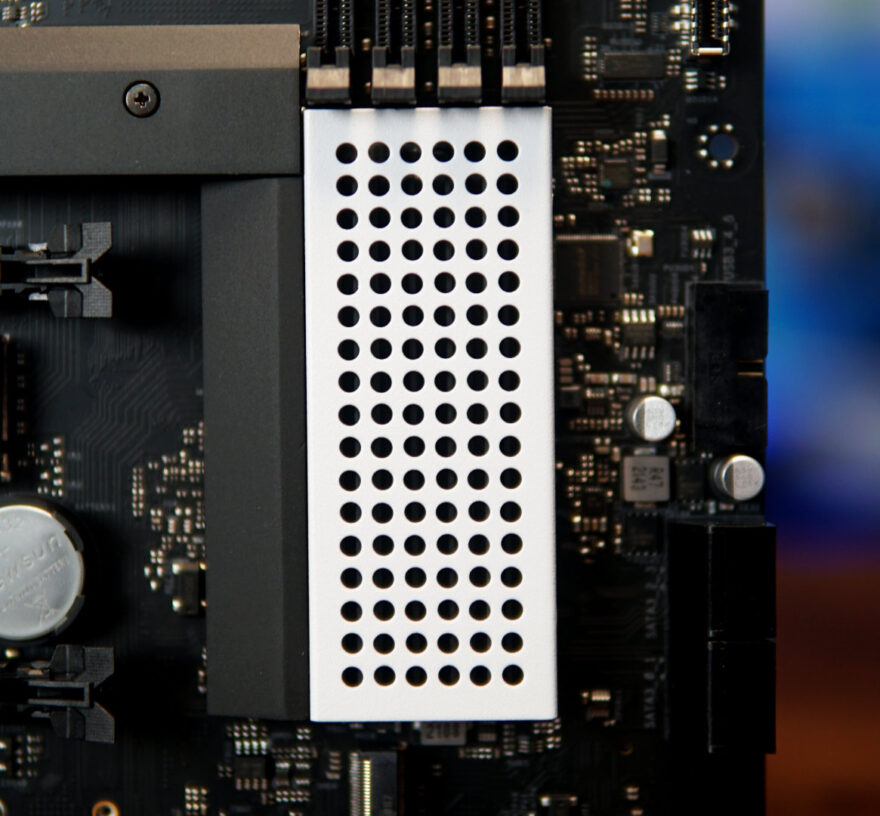
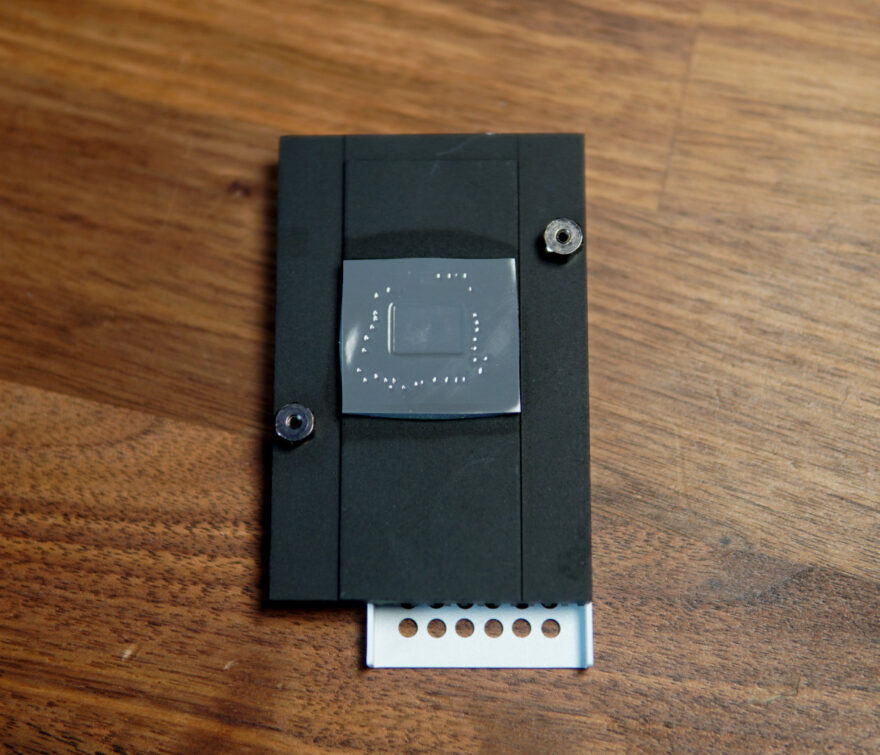
The rear I/O of the board is on the more basic side. It features eight USB connectors; one of which is a type-C connector and two of which are USB 2.0, but they do still manage to include a BIOS flashback port, which is always a nice touch. The back of the board also has the connectors for the Wi-Fi antennas, a HDMI port and a single Ethernet port. When we look at the audio option on the back of the board we can see a very basic collection, it’s just enough to get you by, but only three 3.5mm headers with different purposes and no optical SPDIF connector.
